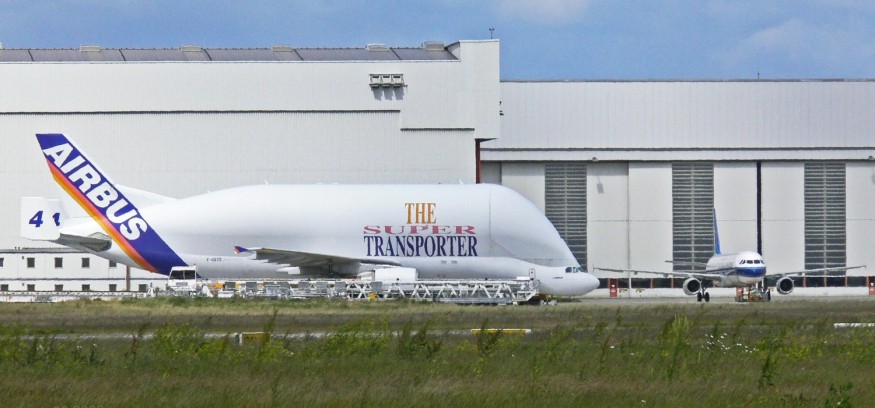Before a scheduled SpaceX launch, satellites observed an enormous Airbus Beluga as it unloaded a satellite at NASA's Kennedy Space Center (KSC) in Florida.

Satellites Capture Unloading of Satellite
According to Space.com, images from a CNES-operated Earth observation satellite show the airplane eclipsed everything around it as it plummeted off the Earth observation satellite.
The Airbus Beluga ST's enormous size makes it even more impressive when viewed from orbit. The aircraft is among the largest operational aircraft based on the size of its cargo hold. For Eutelsat, the Beluga was delivering the Hotbird 13G satellite to KSC.
Airbus Super Transporter
In 1994, the Airbus A300-600ST (Super Transporter), also known as the Beluga, flew for the first time. It has a wingspan of 147 feet (44.8 m) and 184 feet (56 meters). The enormous freight jet can transport weights up to 44 tons (40 tons) and is 22 by 23 by 127 feet in size (6.7 by 7.1 by 39 m).
Even more, the cargo space is equipped with a unique heating module that can be utilized to prevent in-flight harm to delicate payloads that need climate control. There have only ever been five Belugas built.
The unique Beluga aircraft used to deliver our satellites demonstrates Airbus' capacity to develop an autonomous European solution, according to Jean-Marc Nasr, head of space systems at Airbus.
The last time the Airbus Beluga made a flight to the US was in 2009 when it transported the Tranquility module to the International Space Station in preparation for its launch aboard the space shuttle Endeavour.
Hotbird 13F Satellite
A twin of the Hotbird 13G satellite, Hotbird 13F, was transported to KSC by the Beluga on October 15. A SpaceX Falcon 9 rocket carried it into orbit just hours before the Beluga whale landed in Florida.
Nasr hailed the chance to deliver Hotbird 13F as a genuine honor to simultaneously demonstrate two satellites for their client.
The Eutelsat HOTBIRD 13F satellite runs only on electricity. It is the first of two new satellites that Eutelsat will place at the advantageous 13 degrees East location. One of two satellites was created exclusively for Eutelsat as part of a specific Airbus Defence and Space initiative.
The Eurostar Neo communications satellite platform, created through an ESA Partnership Project with Airbus, serves as the foundation for Eutelsat HOTBIRD 13F.
Services Offered
Ten premium DTH systems may be found in the HOTBIRD video neighborhood, which also has a nearly 100% cable and IPTV penetration rate.
It offers more than 600 pay-TV channels, 300 free-to-air channels, 450 HDTV stations, and 14 UHD channels. The system also offers more than 500 radio stations and multimedia services in addition to broadcasting television services.
The Hotbird satellites, created in collaboration with the European Space Agency, CNES, and the UK Space Agency, will be used to transmit television channels throughout Europe, the Middle East, and Northern Africa.
Eutelsat is currently one of the commercial satellite industry's most inventive operators. The group presently offers capacity on 36 satellites through the acquisition of Satmex.
To ensure that the company is close to its clients and can provide the greatest level of service, the support team, which consists of over 1,000 industry specialists from 46 different countries, is based at offices and teleports worldwide.
RELATED ARTICLE: SpaceX to Reuse Dragon Spacecraft Fleet After Rocket Booster from NASA Crew-1 'Leaned'
Check out more news and information on Space in Science Times.










